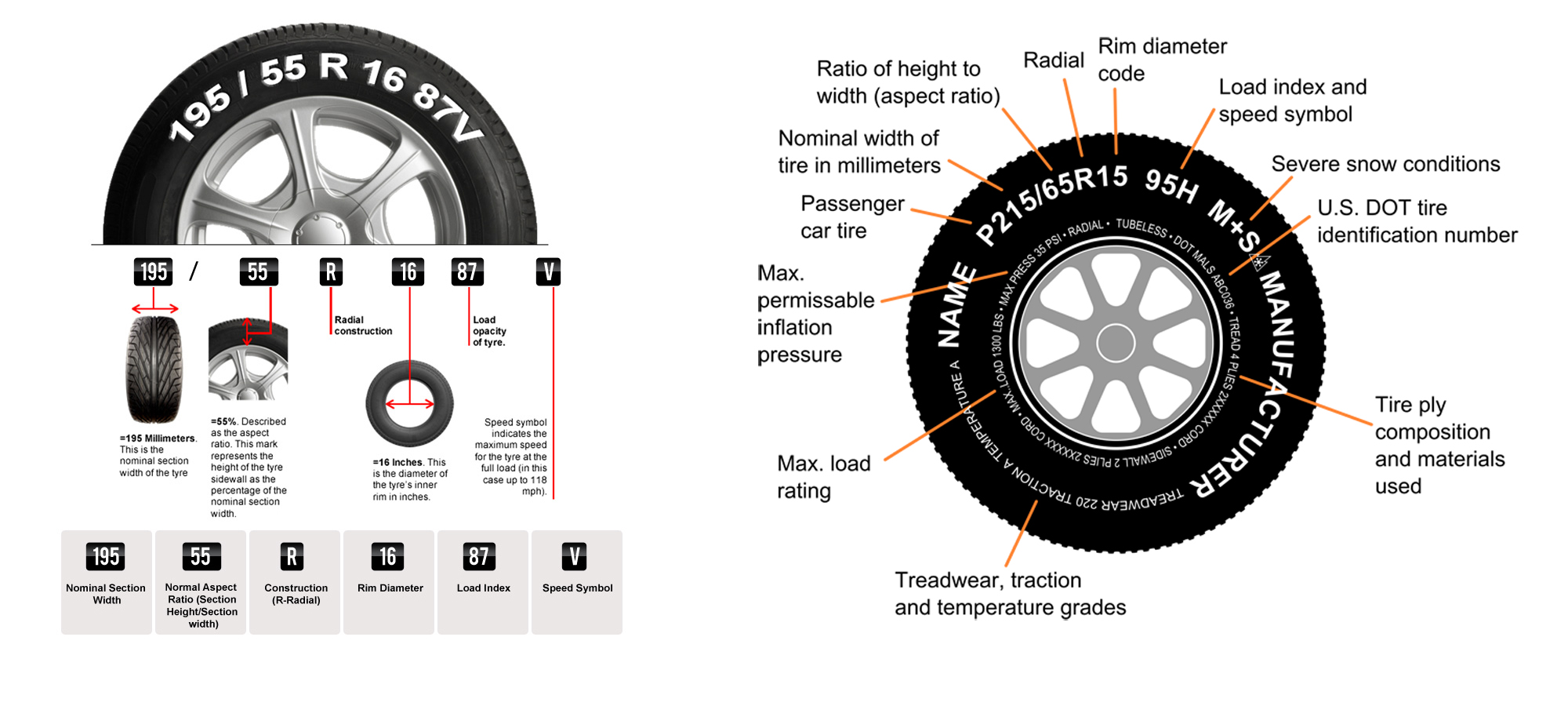If a tyre has only one load. Tire Load Index Chart. What is a tire load rating index? The two digits before the speed rating symbol as show in the diagram as 91V are the load rating. It corresponds to the maximum load the tyre can handle You can compare the load index with the following table to find out the the maximum load in Kg the tyre can handle Each tyre must have a load capacity equal or superior to half the weight borne by the axle on which it is mounted.

The load index can be found on the sidewall. If the tyre load rating is 91T , it means that the load on the tyre shall not exceed 6kg. If you multiply the load (in kilograms) estimated for one tyre by the number of tyres in your vehicle, you get a value slightly higher than the total maximum weight of the vehicle. For speeds in excess of 2kph consult with tyre retailer.
The first number, 9 refers to the load index of the tyre. The tire load index rating communicates how many pounds a tire can safely carry. In this instance, denotes the ability of the. For example, if a tire has a load index of 9 it can support 3pounds at maximum air pressure.
Multiply that by four tires (x 3= 5pounds) to get your car’s maximum load carrying capacity. Never install tires with a lower load carrying capacity than the original tires that were factory installed on your vehicle. It is vital that you check with your manufacturer what capacity should be put on your car.
Insurance can be void if you select the incorrect tyres. The tyre load rating chart below shows what index specification can carry. Tyre Load Rating Chart. There is often an optional reference which shows the load a twinned pair of tyres can carry at the speed shown by it Speed Rating Symbol. The Speed Rating Symbol indicates the speed at which the tyre can carry a load shown by the Load Index.
The Load Index is an assigned number ranging from to 2that corresponds with the maximum load carrying capacity of a tyre. Most passenger car tyre load indexes range from to 126. The maximum capacity per tyre is indicated in kilogram (kg). Load rating and speed index should be looked at together when buying new tyres.
Together these numbers can be considered a variable performance rating. The Aspect Ratio equals the height divided by the width times 100. Combine the speed rating and load index are known as the tire servicing description. Keep in mind that the tire load index is crucial when shopping for a replacement tire. The tire must be able to support your vehicle’s gross vehicle weight rating (GVWR).
If you can’t find the tire servicing description on the sidewall, you may refer to the owner’s manual or visit a specialist for proper tire evaluation. It is recommended that the maximum vehicle load does not exceed of the combined tyre load capacity as indicated by load index. The following tables reflect this recommendation by highlighting in red the axle loads in excess of and up to the maximum permitted for the tyres.
Load index and speed rating symbols The SERVICE DESCRIPTION consists of a Load Index and a Speed Symbol. The tyre speed ratingis the maximum permitted speed at which the car can move with the specified tyre type under the maximum load defined by the tyre load index. These two parameters are dependent on each other and they must be always taken into account when fitting tyres to a car. For example, a tyre with a load index of can carry 615kg of weight. Your tyre ’s load index appears on your sidewall alongside the speed rating.
It’s important to fit a tyre that matches or exceeds your car’s top speed. The speed rating is the maximum speed for a tyre when it is correctly inflated and being used under load.
No comments:
Post a Comment
Note: only a member of this blog may post a comment.